For good reason, dogs are renowned as man’s best friend. They give unconditional affection, loyalty, and companionship. Dogs can be trained to perform chores and provide support that makes daily living more bearable and pleasurable for people with impairments.
Table of Contents
Introduction
In this detailed article, we will look at the finest dog breeds for people with disabilities, taking into account variables like temperament, size, intellect, and specific jobs they can help with. Whether you have a physical disability, a sensory impairment, or a psychological issue, there is almost certainly a dog breed that can provide the assistance and companionship you require.
Criteria for Choosing the Best Dog Breed for People with Disabilities
When it comes to picking a breed for disability assistance, the likelihood of creating a harmonious and productive connection between the person and dog is crucial. Because each person’s demands and circumstances are unique, it’s critical to carefully consider a variety of aspects before making such an important decision. In this section, we’ll look at the most important things to consider when choosing dog breeds for people with disabilities.
- Size Does Matter
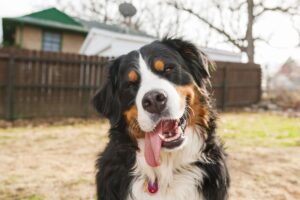
Size is one of the first factors to consider when choosing a dog breed for disability aid. The dog’s size should correspond to the individual’s personal needs and mobility. Smaller breeds, such as Chihuahuas or Shih Tzus, may be easier to maintain for those with restricted mobility or who live in cramped quarters. These small puppies are easy to handle and may be suitable for duties like retrieving small items, alerting to sounds, or providing emotional support.
Larger breeds, such as Labrador Retrievers and Great Danes, can provide physical support and assistance with tasks that require strength and stability. A larger dog can assist someone with mobility issues with tasks such as bracing, pulling a wheelchair, or even providing counterbalance to prevent falls.
It is crucial to strike the proper balance between the size of the dog and the individual’s ability to handle and care for the dog while choosing a breed for disability assistance. A dog that is too big or too small may be inconvenient or uncomfortable for either party.
- Importance of Temperament

When selecting a breed for disability assistance, the temperament of the dog is crucial. Dogs used for this purpose should have certain personality traits that allow them to carry out their responsibilities effectively and harmoniously. Some key characteristics to look for are:
Calm and Patient: In potentially stressful or chaotic situations, assistance dogs should remain calm and patient. They should not become easily agitated or anxious because their primary focus should be on the needs of their owner.
Well-Behaved: Well-behaved dogs are crucial for people with disabilities. Excessive aggression, fearfulness, or unruly behavior in dogs makes them unsuitable for assistance work. A well-mannered dog can be relied on to behave appropriately in public and around strangers.
Comfortable with Strangers: Because assistance dogs frequently accompany their owners in a variety of public settings, it is critical that they are relaxed and non-aggressive around strangers. When appropriate, they should be friendly and approachable, but they should also be able to retain the attention of their primary caregiver.
Ability to Concentrate: Assistance dogs must be able to concentrate on their tasks even when they are in distracting surroundings. They should not be easily distracted or overly curious about their surroundings.
- Trainability is Important
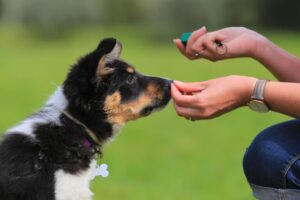
Different dog breeds differ in their intelligence and trainability. For those with impairments, it’s crucial to select a breed that is not only bright but also willing to learn and adapt to new activities. Breeds including Border Collies, German Shepherds, and Poodles are noted for their high intelligence and enthusiasm to please, making them good selections for training as assistance dogs.
The training procedure for assistance dogs can be substantial and may involve obedience training, task-specific training, and public access training to ensure that the dog behaves appropriately in diverse contexts. Breeds that are naturally more obedient and trainable can make this procedure smoother and more successful.
- Allergies and Hypoallergenic Breeds

Some individuals with disabilities may have allergies, which might complicate the choice of a dog breed. Breeds that shed less dander and are deemed hypoallergenic can be a viable option for people with allergies. Hypoallergenic breeds include Poodles, Bichon Frises, and Maltese. These breeds produce fewer allergenic proteins and shed less, reducing the risk of provoking allergies in their owners.
It’s crucial to check with a healthcare expert if you have allergies and are considering adopting an assistance dog. They can help you pick the ideal breed and provide guidance on managing allergies while caring for your canine friend.
- Energy Levels and Activity Requirements
The energy level of a dog should coincide with the activity level of the individual with impairments while adopting an assistance dog. High-energy breeds, such as Border Collies and Australian Shepherds, thrive on physical and mental stimulation. These breeds may be an ideal choice for active folks who enjoy outdoor activities and have the energy to keep up with their canine friends.
A lower-energy breed, on the other hand, may be a better choice for people who have limited mobility or prefer a more relaxing lifestyle. Breeds with low activity levels, such as the Bulldog or the Basset Hound, may be fine with shorter walks and indoor play.
It is critical to match the dog’s energy level to the owner’s lifestyle when choosing dog breeds for people with disabilities to guarantee that both the dog and the individual are comfortable and satisfied in their partnership.
Particular Tasks and Disabilities
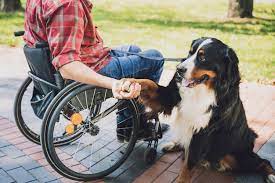
The type of handicap and the precise duties that the assistance dog must perform should also affect the decision to adopt an assistance dog. Different breeds have different strengths that make them better suited for different forms of support work.
Guide Dogs for the Blind: Due to their mild demeanor, intelligence, and trainability, breeds such as Labrador Retrievers and Golden Retrievers are widely utilized as guide dogs.
Hearing Dogs for the Deaf: Alert and responsive breeds like Cocker Spaniels and Australian Shepherds may excel at alerting their owners to sounds.
Mobility Assistance Dogs: Larger breeds, such as Great Danes, German Shepherds, and Bernese Mountain Dogs, are frequently chosen for mobility assistance activities requiring physical support and strength.
Psychiatric Service Dogs: Emotionally sensitive breeds such as Border Collies and Shih Tzus can provide essential emotional support and aid in the management of psychiatric illnesses.
Dog Breeds that are Best for People with Disabilities
Let’s look at some of the greatest dog breeds for individuals with disabilities now that we’ve established the criteria for selecting the proper dog breed.
- Labrador Retriever
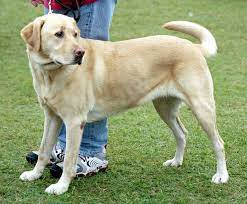
Because of their amiable demeanor and intellect, Labrador Retrievers are one of the most popular dog breeds for disability aid. They are well-known for their loyalty and enthusiasm to please, which makes them ideal companions for people with disabilities. Labrador retrievers are frequently utilized as guide dogs for the blind, mobility assistance dogs, and emotional support animals. They are also adaptable and may be trained to perform a variety of tasks, including object retrieval and stability.
- Golden Retriever

Golden Retrievers and Labrador Retrievers share many characteristics, including their kind temperament and intellect. They are frequently selected as therapy and emotional support animals for people with impairments. Golden retrievers are recognized for their loving nature and are terrific friends and comforters. They can also be taught specific jobs, like picking up lost goods or assisting with balance.
Note: There might be affiliate links mentioned here. We may receive a commission if you purchase a product through an affiliate link. There is no additional charge for you. Please do your own research before making any online purchases.
- German Shepherd

German Shepherds are loyal and protective canines who are highly clever and trainable. As a reliable dog breed for disability aid, they are often used as service dogs for people who have mobility issues, as well as for police and search-and-rescue duties. German Shepherds are powerful and capable of providing physical assistance, making them ideal for duties such as opening doors and hauling wheelchairs.
- Poodle

Poodles are a versatile breed that stands out for their intelligence and hypoallergenic coat. They are available in a variety of sizes, including regular, small, and toy, making them appropriate for people with varying living arrangements and mobility levels. Poodles are frequently utilized as service dogs for people who suffer from allergies or sensory problems. They excel at activities including alerting their owner to sounds, guiding the blind, and offering emotional support.
- Border Collie

Border Collies are well-known for their intellect and problem-solving skills. While they may not be the first choice for physical assistance chores, they are a fantastic dog breed for disability aid for people with mental illnesses. Border Collies, due to their loyal and attentive character, can provide emotional support, alleviate anxiety, and aid in the management of symptoms of ailments like PTSD or anxiety disorders.
- Bernese Mountain Dog

Bernese Mountain Dogs are huge and gentle giants that are recognized for their patience and calm attitude. Because of their size and power, they are frequently utilized as mobility support dogs. Bernese Mountain Dogs can assist people with mobility issues with actions such as bracing or providing stability. Their pleasant demeanor also makes them excellent companions.
- Australian Shepherd

Australian Shepherds are renowned for their intelligence and agility. They are often used as service dogs for people with mobility impairments, as they may aid with activities such as item retrieval, door opening, and physical assistance. Australian Shepherds thrive on mental and physical stimulation, making them ideal for people who lead active lives.
- Shih Tzu

Shih Tzus are a tiny breed that is affectionate and friendly. They are an excellent breed for disability assistance, especially for people suffering from allergies due to their low-shedding coat. While Shih Tzus are not ideal for physical help, they excel at offering emotional support and affection. They are ideal for those with psychiatric problems or those who require a low-maintenance therapy dog.
- Doberman Pinscher
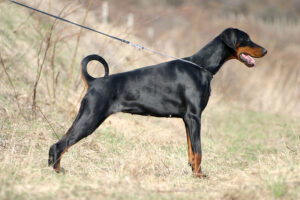
Doberman Pinschers are recognized for their protective instincts and loyalty. Being a trusted dog breed for disability aid, they are frequently used as service dogs for people with disabilities, especially for duties requiring attention and security. Dobermans can be trained to provide physical support, detect specific sounds, and assist with movement activities.
- Great Dane

Great Danes are one of the largest dog breeds, making them ideal for people who require a lot of physical support. They are gentle giants with a pleasant demeanor, and they are frequently utilized as mobility assistance dogs. Great Danes can assist their owners with duties such as bracing, balancing, and collecting objects.
FAQs
Why are dogs thought to be helpful to individuals with disabilities?
Dogs provide company, loyalty, and support to people who are disabled. They can be trained to execute tasks that make daily life more manageable and enjoyable for people with physical, sensory, or psychological problems, thereby improving their quality of life.
How does the size of a dog affect its suitability as a service dog for people with disabilities?
When choosing dog breeds for people with disabilities, size is important. Smaller breeds, such as Chihuahuas or Shih Tzus, are appropriate for those with restricted mobility, whereas larger breeds, such as Labrador Retrievers or Great Danes, can provide physical support and help with jobs requiring muscle.
What temperament characteristics are crucial while adopting an assistance dog for handicapped people?
Assistance dogs should be calm, patient, well-behaved, and at ease in the presence of strangers. To efficiently accomplish their tasks, they must maintain concentration even in distracting settings.
Why is a dog’s trainability important when choosing a breed for handicap assistance?
Trainability is essential for assistance dogs since they must learn and adapt to certain jobs and behaviors. Border Collies, German Shepherds, and Poodles are well-known breeds for their intelligence and eagerness to learn, making them good selections.
Can allergies affect the breed of dog that people with disabilities choose?
Yes, allergies are a factor. Hypoallergenic breeds such as Poodles, Bichon Frises, and Maltese produce fewer allergenic proteins and shed less dander, making them ideal for allergy sufferers.
How can a dog’s energy level be matched to the owner’s lifestyle and aid people with disabilities?
Having similar energy levels ensures a harmonious relationship. Active people may favor high-energy breeds, whereas those with limited mobility may prefer lower-energy types for a more peaceful lifestyle.
What impact does a dog’s breed have on its capacity to assist with various disability-related tasks?
Different breeds have different capabilities that make them better suited for certain types of support jobs. Because of their kind disposition and intelligence, Labrador Retrievers are widely used as guide dogs for the blind.
Are there breeds that excel at offering emotional assistance to those with mental illnesses?
Yes, breeds such as Border Collies and Shih Tzus are known for their emotional sensitivity and can provide essential emotional support for people suffering from mental illnesses.
What chores might larger breeds like Great Danes or German Shepherds help people with impairments with?
Larger breeds are frequently chosen for mobility aid jobs such as providing physical support, bracing, and assisting those with mobility limitations with tasks like retrieving goods.
When choosing a dog breed for disability assistance, is it important to speak with a professional assistance dog organization or trainer?
Yes, consulting with professionals is strongly advised while adopting an assistance dog. They can advise on breed selection, training, and maintaining a good partnership between the person and their assistance dog.
Conclusion
Choosing the best dog breed for your disability is an important decision that should be made after a thorough analysis of your needs and lifestyle. Each of the dog breeds covered in this article has distinct characteristics that make them ideal for various forms of support work and companionship. Whether you need a guide dog, a mobility assistance dog, an emotional support animal, or a therapy dog, there is almost certainly a breed that will meet your needs.
Remember that the success of a service or assistance dog is dependent not only on the breed but also on adequate training and socialization. Professional assistance dog groups and trainers can help match people with disabilities with the proper breed and provide the required training to guarantee a successful partnership.
Finally, the attachment between a disabled person and their assistance dog can be life-changing. These amazing creatures provide not only practical aid but also emotional support and companionship, greatly improving the quality of life for people with disabilities. The selection of the ideal dog breed is only the start of a journey that can lead to greater independence and a deeper bond between people and their canine partners.












